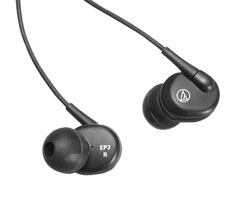A while ago I wrote about in-ear monitors (IEM) and some potential issues with them.
While recently discussing IEM with a colleague, he made a statement that struck me: “In reality, it is the smaller church that needs in ears much more than the larger ones.”
A couple of things came to mind. Larger churches/ministries have the funding to get IEM, and they (often, at least) have paid technical staff that can properly setup and use in ears. And larger churches also have large stages in large rooms, and stage volume is frequently not as much an issue as it is in smaller churches.
Rather obvious reasons a small church might invest in IEM:
1) Stage volume is a huge issue. In some cases, 70-plus percent of the congregation probably hears more stage volume than sound coming out of the main loudspeakers
2) Because of the stage volume, there are continual complaints about loudness and that the vocals cannot be heard over the instruments
3) Further complaints about not being able to hear the vocals
4) Many small churches have singers and instrumentalist that have never played on a big stage and are perhaps self-conscious about their abilities. IEM allows them to better hear themselves and other musicians
5) Feedback can be a constant issue because the vocal monitors always need to be turned up too hot so the singers can hear themselves
So how can smaller churches move into IEM?
Fortunately, system costs have come down in recent years. Further, an investment can be made in just a few systems, with more receivers added over time as funds become available.
I suggest starting with singers – although they’re not the loudest thing on stage, in general, their monitors tend to be loudest. So, a good starting point might be purchasing one transmitter and enough receivers for all of the vocalists. Then I would purchase a second transmitter and put the band on that mix.
Things to keep in mind about IEM:
1) They do take a bit to get used to, so use them in multiple rehearsals first
2) Mixing for “ears” is different than what is needed with standard floor monitors
3) Without ambient/audience mics feeding IEM, musicians will initially feel isolated and perhaps frustrated
4) Just like conventional monitors, when multiple musicians share a mix, there will be issues!
To help make the use of IEM successful, the person providing the IEM mix (usually the house sound operator) should use a set of headphones (or ear pieces) that match the ones the musicians have when setting up the monitor mix on an aux send on the console..
Also, the operator should try to make sure there is an ambient mic (or two) to feed that aux channel (and NOT the main mix).
I’ve found that placing a mic to capture some onstage sound as well as a mic to capture the audience/house sound usually works the best. Dialing the amount of each mic into the mix is a matter of personal taste – work with the musicians on this one.
In-ear monitoring is not a total solution to all stage monitor problems, but it’s a valuable tool that can help when deployed carefully and correctly.
Gary Zandstra is a professional AV systems integrator with Parkway Electric and has been involved with sound at his church for more than 30 years.


















